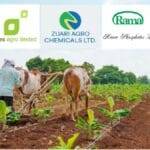Main Points In Hindi (मुख्य बातें – हिंदी में)
यहां दिए गए पाठ के मुख्य बिंदु इस प्रकार हैं:
-
कृषि में परिवर्तन: घाना कोको बोर्ड (COCOBOD) ने उत्तरी घाना में किसानों के लिए वाणिज्यिक शीया खेती की दिशा में बदलाव का आह्वान किया है, जो जंगली कटाई की पुरानी प्रथा से अधिक टिकाऊ और लाभदायक है।
-
शीया पौधों की गर्भधारण अवधि में कमी: घाना के कोको अनुसंधान संस्थान (सीआरआईजी) की नवाचार के कारण, शीया पौधों की गर्भधारण अवधि 35-40 वर्ष से घटकर केवल तीन वर्ष हो गई है, जिससे शीया की खेती में उत्पादकता बढ़ने की उम्मीद है।
-
आर्थिक अवसरों का विकास: यह पहल 470,000 महिला किसानों के लिए आर्थिक अवसर खोलने के लिए महत्वपूर्ण है और शीया बटर का वैश्विक बाजार अनुमानित रूप से 2.75 बिलियन अमेरिकी डॉलर का है।
-
स्थानीय आर्थिक विकास: COCOBOD का लक्ष्य किसानों को जंगली शीया फलों को इकट्ठा करने के बजाय अपने बागानों में शीया की खेती करने की ओर प्रोत्साहित करना है, जिससे क्षेत्र के आर्थिक विकास में योगदान होगा।
- नवीकरणीय ऊर्जा के लिए संभावनाएं: शिया बटर को बायोडीजल में रूपांतरण की संभावनाएं इस क्षेत्र के लिए एक नई आर्थिक अवसर प्रदान करती हैं, जिससे कृषि विविधीकरण को बढ़ावा मिलता है।
Main Points In English(मुख्य बातें – अंग्रेज़ी में)
Here are the main points from the provided text:


-
Shift to Commercial Shea Farming: The Ghana Cocoa Board (COCOBOD) is urging farmers in northern Ghana to transition from wild harvesting practices to commercial shea farming, following innovations in shea plant cultivation techniques.
-
Reduced Maturation Period: Thanks to advancements from the Cocoa Research Institute of Ghana (CRIG), the maturation period for shea plants has been significantly reduced from 35-40 years to just three years, allowing for faster production and increased profitability for farmers.
-
Economic Opportunities: The shift to commercial shea farming is expected to open new economic opportunities for farmers, particularly for the 470,000 women involved in shea nut production, contributing to economic growth in the region.
-
Establishment of Infrastructure: COCOBOD has already established a shea plantation in the Bolgatanga district and is setting up a large nursery to provide high-quality planting materials, further supporting farmers in transitioning to sustainable shea cultivation.
- Biodiesel Potential: The potential conversion of shea butter into biodiesel is highlighted as an exciting opportunity for economic diversification, enhancing the region’s income sources and contributing to renewable energy initiatives.
Complete News In Hindi(पूरी खबर – हिंदी में)
जोशुआ वर्लासी अमलानु द्वारा
घाना कोको बोर्ड (COCOBOD) उद्योग में एक सफलता के बाद, उत्तरी घाना में किसानों से अपना ध्यान जंगली कटाई से हटकर वाणिज्यिक शीया खेती की ओर स्थानांतरित करने का आह्वान कर रहा है।
घाना के कोको अनुसंधान संस्थान (सीआरआईजी) के नवाचार के कारण, शिया पौधों की गर्भधारण अवधि 35-40 वर्ष से घटकर केवल तीन वर्ष हो गई है।
इस बदलाव की घोषणा जोसेफ एडू, सीईओ-सीओसीओबीओडी द्वारा की गई थी, और यह किसानों के लिए नए आर्थिक अवसर खोलने के लिए देश के उत्तरी हिस्से में शीया खेती में क्रांति लाने के लिए तैयार है।
शीर्ष कोको किसानों को हाल ही में पुरस्कार प्रस्तुति के दौरान, श्री ऐडू ने नवाचार के प्रभाव पर प्रकाश डाला – उत्तरी घाना में किसानों से पारंपरिक जंगली कटाई के व्यवहार्य विकल्प के रूप में वाणिज्यिक शीया खेती को अपनाने का आग्रह किया।
“हम शीया क्षेत्र में एक बड़ा परिवर्तन कर रहे हैं। हमने शीया के पौधे की गर्भधारण अवधि को 35-40 वर्ष से घटाकर केवल तीन वर्ष कर दिया है। इस नवाचार का मतलब है कि शीया, जो केवल दशकों के बाद फल देती थी, अब केवल तीन वर्षों में फल दे सकती है, ”श्री ऐडू ने कहा।
सीआरआईजी के अनुसंधान के माध्यम से गर्भधारण के समय में कमी से शीया खेती में उत्पादकता में उल्लेखनीय सुधार होने की उम्मीद है। कम से कम पांच वर्षों में फल देने वाली संकर रोपण सामग्री के साथ, किसानों के पास अब अधिक कुशलता से शीया की खेती करने का अवसर है।
“हम उत्तरी क्षेत्र में शीया खेती के लिए एक नया मॉडल पेश कर रहे हैं। हमारी हाइब्रिड सामग्री तीन से पांच वर्षों में फल देती है, जो पारंपरिक प्रतीक्षा अवधि से बहुत दूर है,” श्री ऐडू ने कहा।
वाणिज्यिक शीया खेती की ओर कदम को जंगली शीया नट्स को इकट्ठा करने की पुरानी प्रथा से अधिक टिकाऊ और लाभदायक खेती की ओर स्थानांतरित करने में एक महत्वपूर्ण कदम के रूप में देखा जाता है।
घाना दुनिया का चौथा सबसे बड़ा शिया कर्नेल उत्पादक देश है, जो 470,000 महिला किसानों के लिए आर्थिक अवसर प्रदान करता है। घाना में, शीया प्रमुख निर्यात वस्तुओं में से एक है। हाल की रिपोर्टों के अनुसार, शिया बटर का वैश्विक बाजार अनुमानित रूप से 2.75 बिलियन अमेरिकी डॉलर है, जिसमें वर्ष 2033 तक 5.58 बिलियन अमेरिकी डॉलर की वृद्धि का संकेत दिया गया है।
श्री ऐडू ने इस बात पर जोर दिया कि COCOBOD उत्तर में किसानों को व्यावसायिक शीया खेती में बदलने में मदद करने के लिए पूरी तरह से प्रतिबद्ध है, उनका मानना है कि इससे क्षेत्र को महत्वपूर्ण आर्थिक लाभ होंगे।
उन्होंने बताया, “हम चाहते हैं कि हमारे किसान जंगली शीया फलों को इकट्ठा करने के बजाय अपने स्वयं के शीया बागानों की खेती करें।” “यह बदलाव उत्तरी घाना की अर्थव्यवस्था को बदल देगा।”
इस पहल के हिस्से के रूप में, COCOBOD ने पहले से ही उत्तरी क्षेत्र के एक जिले बोले में एक शीया बागान स्थापित किया है, और किसानों के लिए उच्च गुणवत्ता वाली रोपण सामग्री का उत्पादन करने के लिए क्षेत्र में एक बड़ी नर्सरी स्थापित की है।
इस पहल का उद्देश्य उत्तर में किसानों के सामने आने वाली कुछ आर्थिक चुनौतियों का समाधान करना भी है, जहां कृषि अर्थव्यवस्था की रीढ़ है। जंगली कटाई से लेकर व्यावसायिक शीया खेती की ओर बढ़कर, COCOBOD का मानना है कि किसान अपनी आय बढ़ा सकते हैं, नौकरियां पैदा कर सकते हैं और क्षेत्र के समग्र आर्थिक विकास में योगदान कर सकते हैं।
“यह केवल आर्थिक लाभ के लिए शीया की खेती के बारे में नहीं है। यह किसानों के लिए स्थायी आजीविका बनाने और उत्तर की अर्थव्यवस्था को बदलने के बारे में है, ”उन्होंने कहा।
इसके अतिरिक्त, शिया बटर का बायोडीजल में रूपांतरण इस क्षेत्र के लिए एक रोमांचक नया अवसर प्रस्तुत करता है; शीया खेती के आर्थिक प्रभाव को और अधिक विविध बनाना।
श्री ऐडू ने बायोडीजल उत्पादन की क्षमता पर प्रकाश डाला, जो नवीकरणीय ऊर्जा क्षेत्र का एक महत्वपूर्ण हिस्सा बन सकता है।
उन्होंने कहा, “हम यह भी तलाश रहे हैं कि शिया बटर को बायोडीजल में कैसे परिवर्तित किया जाए, जो क्षेत्र में आर्थिक विकास का एक नया अवसर बन सकता है।”
COCOBOD का किसानों से शिया खेती को अपनाने का आह्वान उत्तरी घाना में कृषि विविधीकरण का समर्थन करने के लिए एक व्यापक रणनीति का हिस्सा है। बायोडीजल के उत्पादन के साथ वाणिज्यिक शीया खेती में बदलाव को स्थानीय आय को बढ़ावा देने, रोजगार पैदा करने और किसानों की आजीविका में सुधार करने के साधन के रूप में देखा जाता है।
Complete News In English(पूरी खबर – अंग्रेज़ी में)
By Joshua Warahasi Amalan
The Ghana Cocoa Board (COCOBOD) is urging farmers in northern Ghana to shift their focus from wild harvesting to commercial shea nut farming after a success in the cocoa industry.
Thanks to innovations from the Cocoa Research Institute of Ghana (CRIG), the time it takes for shea trees to bear fruit has been reduced from 35-40 years to just three years.
This significant change was announced by Joseph Edu, CEO of COCOBOD, and aims to revolutionize shea farming in the northern region, creating new economic opportunities for farmers.
During a recent award presentation for cocoa farmers, Mr. Edu highlighted the impact of this innovation and encouraged farmers to adopt commercial shea farming as a viable alternative to traditional wild harvesting.
“We are making a major change in shea cultivation. We have reduced the time for shea trees to grow from 35-40 years to only three years. This innovation means that shea, which used to take decades to bear fruit, can now do so in just three years,” said Mr. Edu.
With this reduction in time, productivity in shea farming is expected to improve significantly. Farmers now have the opportunity to cultivate shea more efficiently with hybrid planting materials that bear fruit in as little as five years.
“We are introducing a new model for shea farming in the northern region. Our hybrid materials produce fruit in three to five years, which is much shorter than the traditional waiting period,” noted Mr. Edu.
This transition to commercial shea farming is seen as a crucial step towards more sustainable and profitable agricultural practices, moving away from the old method of collecting wild shea nuts.
Ghana is the fourth-largest producer of shea kernels in the world, providing economic opportunities for 470,000 women farmers. Shea is one of Ghana’s major export items, with recent reports estimating the global market for shea butter at around $2.75 billion, projected to grow to $5.58 billion by 2033.
Mr. Edu stressed that COCOBOD is fully committed to assisting farmers in shifting to commercial shea farming, believing it will bring significant economic benefits to the region.
He stated, “We want our farmers to cultivate their own shea orchards instead of gathering wild shea fruits. This change will transform the economy of northern Ghana.”
As part of this initiative, COCOBOD has already established a shea plantation in the Bole district of the northern region and set up a large nursery to produce high-quality planting materials for farmers.
This initiative also aims to address some of the economic challenges facing farmers in the north, where agriculture is the backbone of the economy. By moving from wild harvesting to commercial shea farming, COCOBOD believes farmers can increase their incomes, create jobs, and contribute to the overall economic development of the region.
“This is not just about the economic benefits of shea farming. It’s about building sustainable livelihoods for farmers and changing the economy of the north,” he added.
Additionally, converting shea butter into biodiesel presents an exciting new opportunity for the region, further diversifying the economic impact of shea farming.
Mr. Edu highlighted the potential for biodiesel production to become an important part of the renewable energy sector.
He said, “We are also exploring how to convert shea butter into biodiesel, which could create a new avenue for economic growth in the region.”
COCOBOD’s call for farmers to adopt shea farming is part of a broader strategy to support agricultural diversification in northern Ghana. The shift to commercial shea farming, along with biodiesel production, is viewed as a means to enhance local income, create jobs, and improve farmers’ livelihoods.






